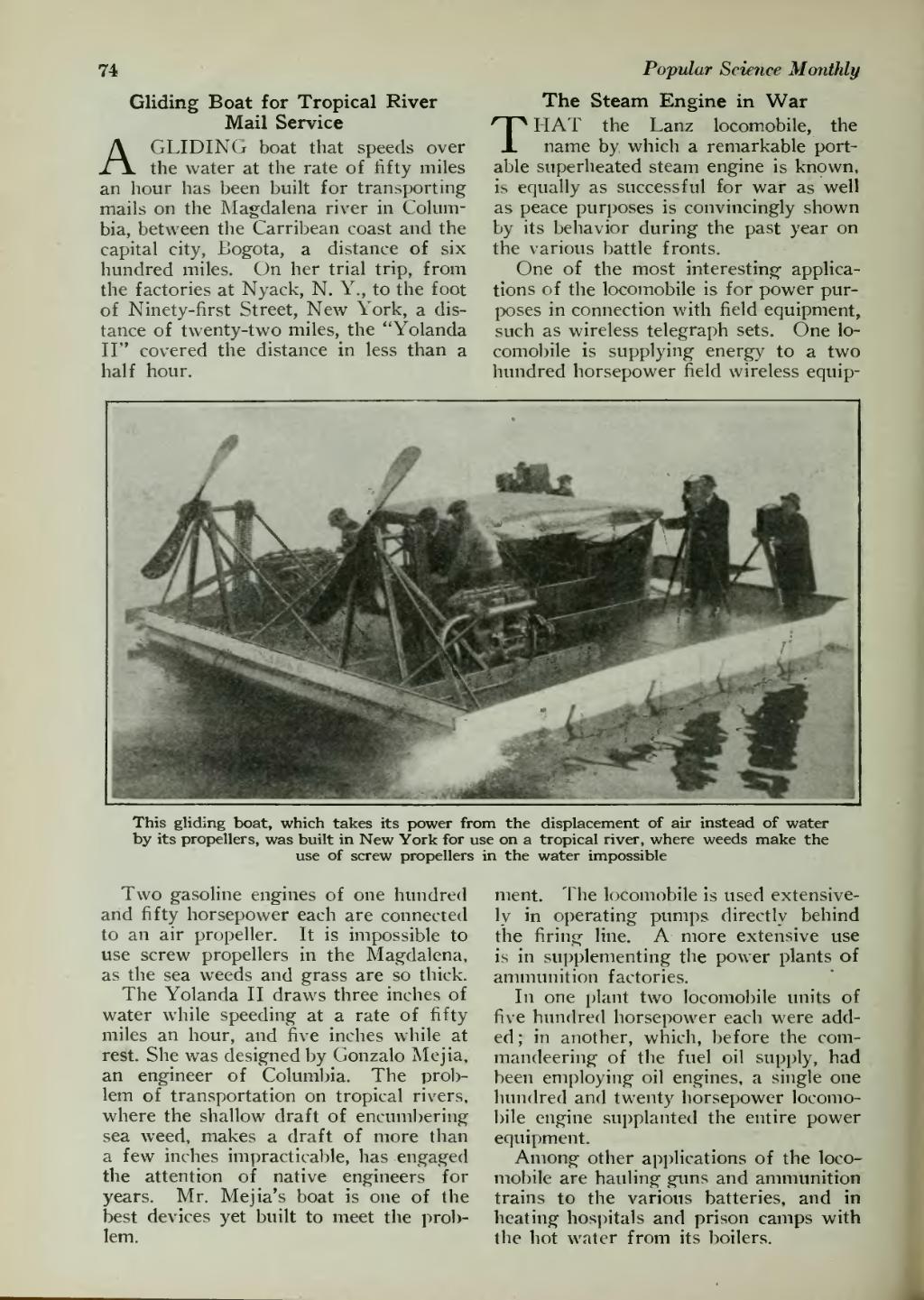Gliding Boat for Tropical River
Mail Service
A GLIDING boat that speeds over the water at the rate of fifty miles an hour has been built for transporting mails on the Magdalena river in Columbia, between the Carribean coast and the capital city, Bogota, a distance of six hundred miles. On her trial trip, from the factories at Nyack, N. Y., to the foot of Ninety-first Street, New York, a distance of twenty-two miles, the "Yolanda II" covered the distance in less than a half hour.

This gliding boat, which takes its power from the displacement of air instead of water
by its propellers, was built in New York for use on a tropical river, where weeds make the
use of screw propellers in the water impossible
Two gasoline engines of one hundred and fifty horsepower each are connected to an air propeller. It is impossible to use screw propellers in the Magdalena, as the sea weeds and grass are so thick.
The Yolanda II draws three inches of water while speeding at a rate of fifty miles an hour, and five inches while at rest. She was designed by Gonzalo Mejia, an engineer of Columbia. The problem of transportation on tropical rivers, where the shallow draft of encumbering sea weed, makes a draft of more than a few inches impracticable, has engaged the attention of native engineers for years. Mr. Mejia's boat is one of the best devices yet built to meet the problem.
The Steam Engine in War
THAT the Lanz locomobile, the name by which a remarkable portable superheated steam engine is known, is equally as successful for war as well as peace purposes is convincingly shown by its behavior during the past year on the various battle fronts.
One of the most interesting applications of the locomobile is for power purposes in connection with field equipment, such as wireless telegraph sets. One locomobile is supplying energy to a two hundred horsepower field wireless equipment. The locomobile is used extensively in operating pumps directly behind the firing line. A more extensive use is in supplementing the power plants of ammunition factories.
In one plant two locomobile units of five hundred horsepower each were added; in another, which, before the commandeering of the fuel oil supply, had been employing oil engines, a single one hundred and twenty horsepower locomobile engine supplanted the entire power equipment.
Among other applications of the locomobile are hauling guns and ammunition trains to the various batteries, and in heating hospitals and prison camps with the hot water from its boilers.
